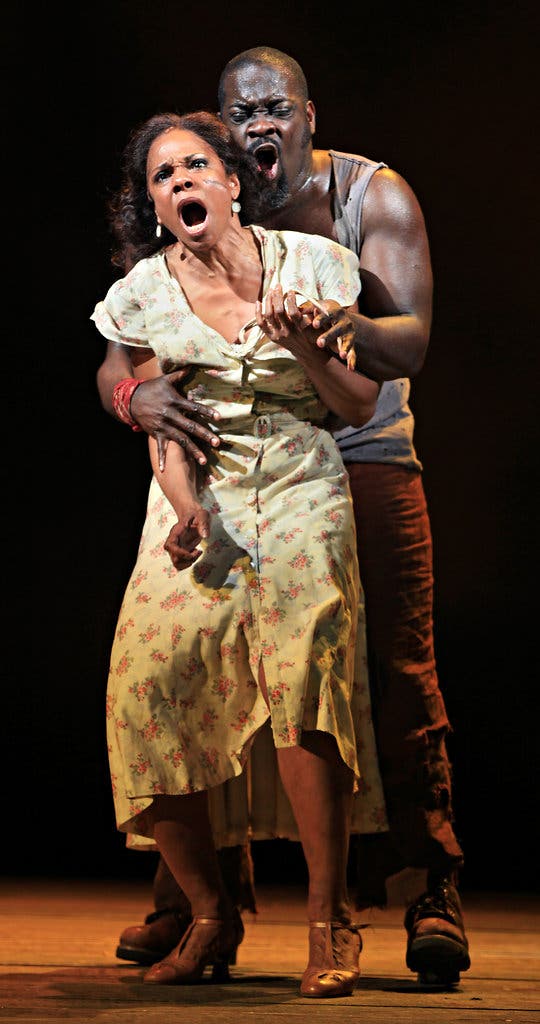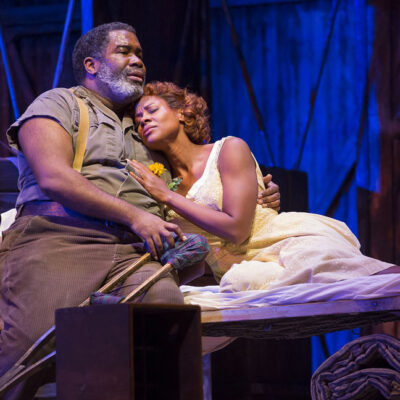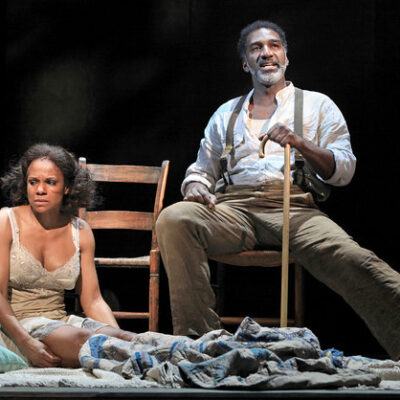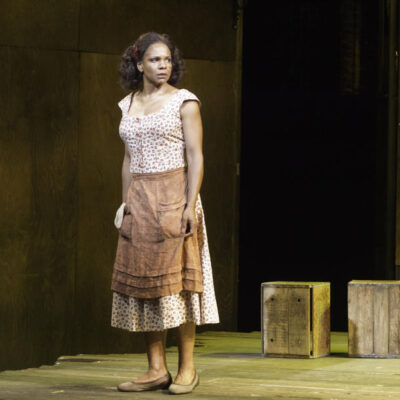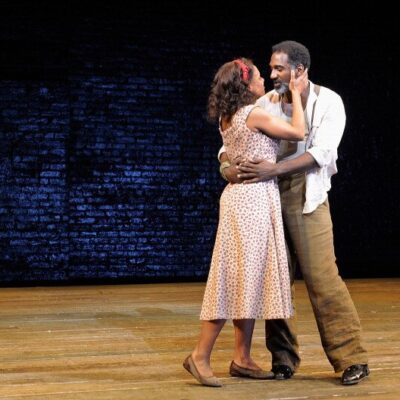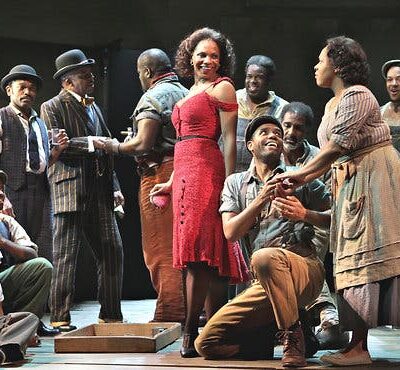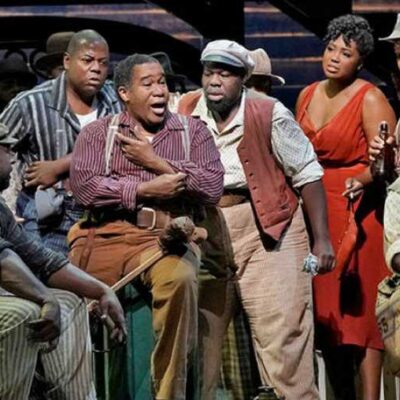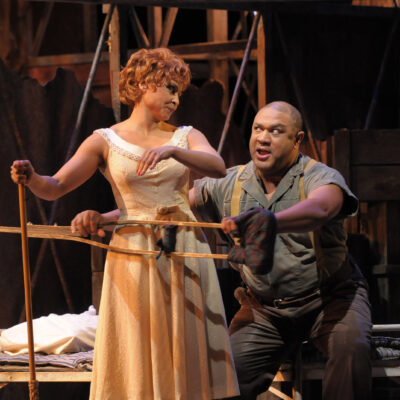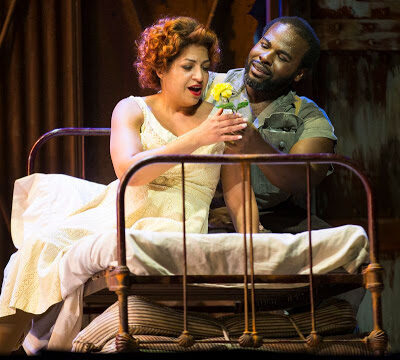PORGY AND BESS – EN
Porgy and Bess
Dramatic folk opera in three acts by George Gershwin. Its English libretto was written by DuBose Heyward (with lyrics by Heyward and Ira Gershwin), based on Heyward’s novel Porgy (1925). The opera—which premiered at the Alvin Theatre in New York City on October 10, 1935—is considered to be the first great American opera. It contains many beloved musical numbers, including the arias “Summertime” and “I Got Plenty o’ Nuttin’.” In 1926 George Gershwin wrote to Heyward about collaborating on an operatic version of Porgy. Heyward was enthusiastic, but Gershwin’s other obligations delayed work until 1934.
It was one of those mythic New York nights: the Broadway premiere of the Gershwins’ “Porgy and Bess” in 1935.
The starry opening drew Hollywood royalty, including Katharine Hepburn and Joan Crawford. After the ovations died down, the A-listers headed to a glamorous after-party, where George Gershwin played excerpts from his score on the piano.
By the next morning, though, the questions would begin. Those questions — about genre, about representation, about appropriation — have followed “Porgy” through more than eight decades of convoluted, sometimes troubling history, and remain salient as the Metropolitan Opera opens its season on Sept. 23 with a new production, its first performances of the work since 1990.
Is “Porgy,” which features some of the best-loved songs by one of America’s greatest songwriters (“Summertime,” “It Ain’t Necessarily So,” “I Loves You, Porgy”), as well as mighty choruses and bold orchestrations, an opera or a musical? It returned to Broadway in 2012 in a stripped-down form. But since 1976, when Houston Grand Opera brought it back to the opera house, it has often been claimed — you can almost hear the capital letters — as the Great American Opera.
Is it a triumph of melting-pot American art, teaming up George and Ira Gershwin (the sons of Russian Jewish immigrants) with DuBose Heyward (the scion of a prominent white South Carolina family) and his Ohio-born wife, Dorothy, to tell a uniquely African-American story? Or is it cultural appropriation? The fact that the most-performed opera about the African-American experience is the work of an all-white team has not been lost on black composers who have struggled to get their music heard.
George Gershwin
Original name Jacob Gershvin,
Born September 26, 1898, Brooklyn, New York, U.S.
Died July 11, 1937, Hollywood, California)
One of the most significant and popular American composers of all time. He wrote primarily for the Broadway musical theatre, but important as well are his orchestral and piano compositions in which he blended, in varying degrees, the techniques and forms of classical music with the stylistic nuances and techniques of popular music and jazz. Gershwin was the son of Russian Jewish immigrants. Although his family and friends were not musically inclined.
George Gershwin dropped out of school and began playing piano professionally at age 15. Within a few years, he was one of the most sought after musicians in the United States. A composer of jazz, opera, and popular songs for stage and screen, many of his works are now standards. Gershwin died immediately following brain surgery on July 11, 1937, at the age of 38.
A natural talent, it was Gershwin who took it up and eventually sought out mentors who could enhance his abilities. He eventually began studying with the noted piano teacher Charles Hambitzer, and apparently impressed him; in a letter to his sister, Hambitzer wrote, “I have a new pupil who will make his mark if anybody will. The boy is a genius.”
Throughout his 23-year career, Gershwin would continually seek to expand the breadth of his influences, studying under an incredibly disparate array of teachers, including Henry Cowell, Wallingford Riegger, Edward Kilenyi and Joseph Schillinger.
